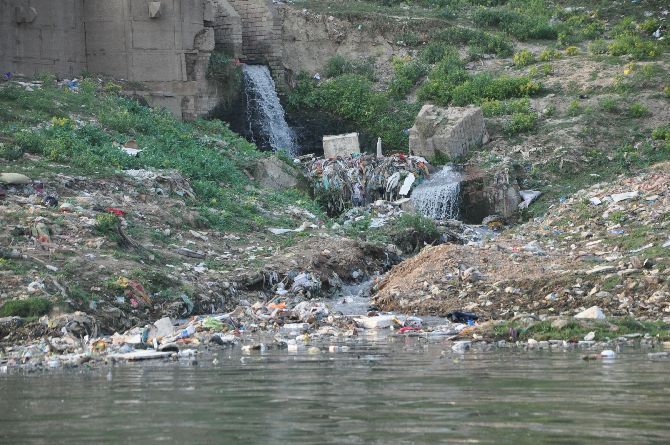 | « Back to article | Print this article |
Only 40 of the 160 projects under the Namami Gange Mission -- a Rs 20,000 crore project for cleaning the river -- have been completed.

Faced with the herculean task of fulfilling the government's promise of cleaning the Ganga, the Centre needed nothing short of a silver bullet to meet the deadline for the project, which some allege, is being implemented at a snail's pace.
This sluggish implementation is the ostensible reason behind Transport Minister Nitin Gadkari, considered one of the top- performing ministers, getting additional charge of the water resources ministry, sources say.
The ministry is tasked with the responsibility of executing the project dear to Prime Minister Narendra D Modi.
Gadkari replaces Uma Bharti who has now been given charge of drinking water and sanitation in the rejigged Modi Cabinet.
The Centre has set a target of 2018 for cleaning the mighty river which touches the lives of millions of Indians in one way or the other.
According to sources in the water resources ministry, a total of 160 projects, worth around Rs 12,500 crore (Rs 125 billion), have been approved under the Namami Gange Mission -- a Rs 20,000 crore (Rs 200 billion) project for cleaning the river.
These include developing river fronts, setting up sewage treatment plants and construction of ghats and crematoria, among others.
Till now, only 40 projects have been completed, the sources said.
The BJP coming to power in Uttarakhand and Uttar Pradesh, two of the five key Ganga basin states, in March did not help the project gain the expected momentum, they added.
Bihar, West Bengal and Jharkhand are other three Ganga basin states.
In Bihar, the BJP returned to power only towards the end of July.
"The reason offered until six months ago (prior to the UP and Uttarakhand assembly polls) that barring Jharkhand the remaining four states had non-BJP governments, too, seems specious," a source in the water resources ministry said, requesting anonymity.
"Because, even though the BJP came to power in UP and Uttarakhand, things haven't changed much. This could be the reason that there is a change in guard in the ministry as the deadline pressure mounts," the source added.
Gadkari has been associated with the Namami Gange Mission in his capacity as the transport and shipping minister to develop waterways in the 2,525-km river. Sources said this may have worked in his favour.
"Since he is aware of the project in some or the other way, he may not eat into much of the crucial time left to understand the project's nitty-gritty.
"Plus, he is considered as a go-getter, a minister who prefers to hear answers from officers only in either 'yes or no'," the sources added.
Apart from Namami Gange, the water resources ministry is implementing the key Ken-Betwa river-linking project, the first project aimed at connecting two rivers to meet the water needs of drought-prone swathes of the Bundelkhand region, which falls in both Uttar Pradesh and Madhya Pradesh.
The project, too, has been delayed due to environmental clearance issues. The BJP government in Madhya Pradesh refused to give its approval for implementing the project.
Meanwhile, eminent water activist Rajendra Singh has urged the Centre to take up the cleaning of rivers on a priority basis and emphasised the need to educate the present generation about the importance of water bodies.
The Magsaysay Award-winning campaigner was speaking at an international conference in Thane, where speakers called for a ban on building hotels and houses within a 1 km radius of river banks in the country.
The participants highlighted the need to ban hazardous fishing activities and prevent discharge of harmful effluents and town sewage of solid waste into the rivers.
Singh, popularly known as the `Waterman of India', spoke about how the Vedic approach towards environmental crises were about traditional, localised adaption of techniques which were not only decentralised but also cost-effective. They were unlike the modern mitigation techniques which were complicated and cost prohibitive.
IMAGE: Sewage and effluents flow unchecked into the Ganga in Ghazipur. Photograph: Kind courtesy: ITBP